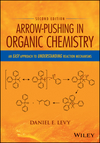- What is the impact of small protein design?
- What are the advantages/disadvantages of biologics vs small molecule drugs?
Future postings will address questions relevant to employment opportunities as well as what kinds of knowledge and experience are helpful in the biopharmaceutical industry.
What is the impact of small protein design?
Proteins are highly complex structures assembled by nature from the complement of naturally occurring amino acids. The complexity of proteins comes not only from the structural diversity of the amino acid residues contained in the protein chain, but also from the secondary structure obtained as the protein chain folds into its biologically relevant conformation. To this end, many academic research groups are studying how various amino acid sequences fold into the different structural motifs found within proteins and enzymes. Additionally, many software platforms were developed to help predict how proteins fold.
With the complexity associated with amino acid sequence and secondary structure, it seemed somewhat unlikely that amino acid sequences can be designed to both fold like proteins and induce an intended biological response. However, in 1997, at least this first part was realized. As reported (J. Am. Chem. Soc. 2007, 129, 1532) Professor Alanna Schepartz and her group succeeded in designing a synthetic protein sequence capable of folding in much the same was as natural proteins do. This synthetic protein was prepared from beta-amino acids as compared to naturally occurring alpha-amino acids.
While the design of therapeutically useful synthetic proteins is still a long way off, shorter peptide sequences have contributed to the arsenal of therapeutically useful structures for years. Such peptide-based therapeutics include hematide (treating anemia), integrilin (treating acute coronary syndrome) and natrecor (treating congestive heart failure). To this end, synthetic peptides provide valuable therapeutic agents for indications which, in many cases, have no conventional small-molecule drug alternatives.
What are the advantages/disadvantages of biologics vs small molecule drugs?
Currently, there are two classes of therapeutic agents - biologics and small molecule drugs. Classical drug discovery efforts generally target small molecules (average molecular weight is ~500) as therapeutic agents. These are advantageous because they are generally easy to synthesize and can be administered orally. Furthermore, small molecule drugs can be designed as either agonists or antagonists of biological processes for use against either extracellular or intracellular targets. Unfortunately, small molecules cannot presently modulate all biological targets with the specificity and potency required for useful therapeutics. Additionally, the lead identification and lead optimization processes can be slow for this class of drugs.
Complementary to traditional small molecule drugs is the class of therapeutics collectively referred to as biologics. This class includes proteins, enzymes and antibodies. Such large molecules (molecular weights range from ~10,000-50,000) are generally not suitable for oral administration and must be delivered by injection or infusion. This is inconvenient because these methods of use are generally not compatible with patient self-administration. Like small molecule drugs, biologics are useful as either agonists or antagonists of biological processes. However, unlike small molecules, biologics are only useful for extracellular targets. Additionally, biologics are generally highly selective and highly potent against target processes. Finally, like small molecules, lead identification and lead optimization are very slow processes.
For many years, the pharmaceutical industry focused on small molecule drugs. With the advent of the biotechnology industry, biologics have become increasingly important as evidenced by commercial successes from companies such as Genentech, Amgen and Biogen. Through the combined efforts of traditional drug discovery and the development of biologics, advances will continue to provide treatments for medical disorders providing improved qualities of life for all.
Currently, there are two classes of therapeutic agents - biologics and small molecule drugs. Classical drug discovery efforts generally target small molecules (average molecular weight is ~500) as therapeutic agents. These are advantageous because they are generally easy to synthesize and can be administered orally. Furthermore, small molecule drugs can be designed as either agonists or antagonists of biological processes for use against either extracellular or intracellular targets. Unfortunately, small molecules cannot presently modulate all biological targets with the specificity and potency required for useful therapeutics. Additionally, the lead identification and lead optimization processes can be slow for this class of drugs.
Complementary to traditional small molecule drugs is the class of therapeutics collectively referred to as biologics. This class includes proteins, enzymes and antibodies. Such large molecules (molecular weights range from ~10,000-50,000) are generally not suitable for oral administration and must be delivered by injection or infusion. This is inconvenient because these methods of use are generally not compatible with patient self-administration. Like small molecule drugs, biologics are useful as either agonists or antagonists of biological processes. However, unlike small molecules, biologics are only useful for extracellular targets. Additionally, biologics are generally highly selective and highly potent against target processes. Finally, like small molecules, lead identification and lead optimization are very slow processes.
For many years, the pharmaceutical industry focused on small molecule drugs. With the advent of the biotechnology industry, biologics have become increasingly important as evidenced by commercial successes from companies such as Genentech, Amgen and Biogen. Through the combined efforts of traditional drug discovery and the development of biologics, advances will continue to provide treatments for medical disorders providing improved qualities of life for all.





Generally speaking, the jacketed glass reactor material may be from the sand, which may make machine sent back to the vibrating screen so as to be separated. Here: www.toption-china.com/products/glass-reactor-with-jacket-10l. In fact, the stone crushing machine is very popular in Africa, Middle East, India, South Asia, Sudan etc.
ReplyDeletePeptide lead optimization is to improve upon a lead molecule that demonstrates activity at a target of interest by optimizing its potency or selectivity at the target and its absorption, Peptide Lead Optimization
ReplyDelete